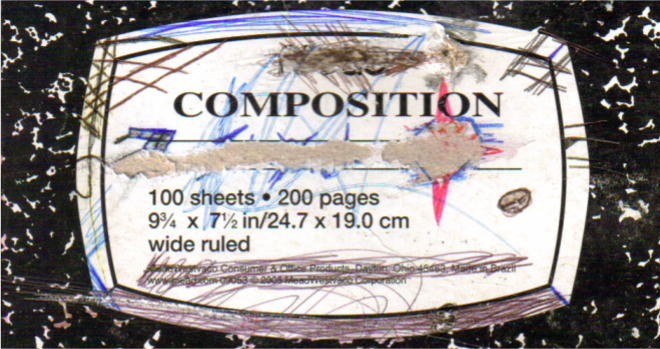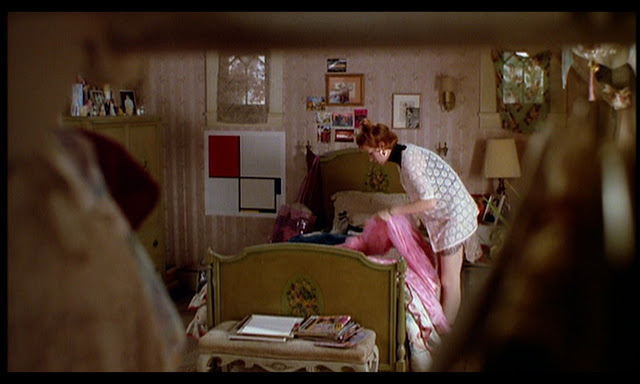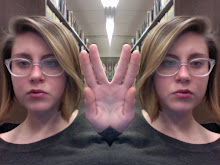Two weeks ago, an Italian court cleared Amanda Knox of all charges in the 2007 Meredith Kercher murder. Knox spent four years fighting
the Italian legal system, living proof that no study abroad program sufficiently prepares you for the possibility of your roommate getting murdered in uncertain circumstances. As the case played itself out, the American, British, and Italian
media doled out Knox in all-too-familiar female archetypes: naïve girl next door,
manipulative femme fatale, Satan-worshipping she-devil.
The prosecution’s case rested on the sensationalism inspired
by this last stereotype. Precious
little evidence conclusively linked Knox, or her co-defendant and ex-boyfriend,
Raffaele Sollecito, to Kercher’s death. However, the time of the murder (the night after Halloween), combined with
Knox’s
calm demeanor following Kercher’s death, made Knox guilty enough for the police and court in Perugia.
 |
| Amanda Knox (Radar Online) |
In the doubling back of cultural and gender stereotypes, one
description of Knox during the whole process speaks the loudest. Nina Burliegh describes
Knox as a “cipher” in her
L.A. Times article. The handy dictionary on my computer - New Oxford American Dictionary - defines a ‘cipher’
as a code, implicitly waiting for a solution; it can also mean a “zero,” a
person who “seems to have no will of their own.” In both definitions, “cipher” reduces Knox’s
agency, pointing the fact that legal defendants, particularly female
defendants, become a mess of mixed images. Simple readings, intended to reconcile these conflicting interpretations, further complicate things as they coalesce - sometimes before the defendant receives a court date, much less takes
the stand.
With this reading strategy in mind, I see traces of the Patty Hearst trial. Different era,
different crime and radically different circumstances, Hearst and Knox nonetheless merge together for me. In their pictures walking to court, I feel like they could even be the same person.
 |
| Patrica Hearst and Amanda Knox led to their respective trials (Corbis, AP) |
In 1974, the Sybionese Liberation Army (SLA), a leftist
radical militant group, kidnapped Patricia Hearst (granddaughter of William
Randolph Hearst) from her apartment in Berkeley. During the period she spent with the SLA, they released a
series of audio tapes that wound up in the mailboxes of major media outlets. Each tape chronicled Hearst’s
transformation from
captive to
participant in the group’s
militant actions, each word she spoke leading her closer to her conviction in 1976.
 |
| "Foxy Knoxy" (Everything Oprah) |
Hearst's parents attempted a counter-narrative: Patty as
normal, healthy white girl with a normal, healthy upbringing. The Hearst's released a series of family photographs to strengthen this reading, hoping to rally public support behind Patty, rather than let Patty's statements on the SLA audio tapes "speak" for her. Similarly, Knox's family famously
enlisted a PR agency to handle the publicity for Knox's defense, a move credited with keeping Knox's plight fresh in everyone's mind. A photograph of a younger Knox in her soccer uniform surfaced, attempting to clear the negative connotations associated with "Foxy Knoxy," a nickname from Knox's childhood
soccer team that the
British media employed in its portrayal of Knox as a hyper-sexualized and unstable femme fatale.
 |
| Hearst's first communion (PBS) |
Taken side by side, these two photographs locate their subjects within prevailing notions of "normal" American girlhood. However, the very fact that these images were mobilized contradict their intended purpose; in attesting to these women's average-ness, don't they accomplish the exact opposite? Riffing on the title of Shana Alexander's book on the Hearst trial,
Anyone's Daughter, legal historian Nancy Isenberg states, "Hearst also can be seen not to represent
anyone's daughter at all because she had no discursive identity until she was kidnapped."("Not 'Anyone's Daughter': Patty Hearst and the Postmodern Legal Subject") Likewise, Knox isn't "anyone's daughter"; rather, her position at the center of a widely hyped trial with an attentive audience in three countries suggests otherwise.
Representing Hearst and Knox as "normal" reveals the enormous amount of work that race, gender, and class play in creating this label. The success of both Hearst's and Knox's public relations campaigns rely on the viewer's willingness to read these white, wealthy females as someone that
anyone might know in their day to day life.
Whether or not these women started off normally, their experiences profoundly changed them. Representations that stress their normal-ness end up erasing this experience, reaching back to a moment that's reconstructed as familiar and commonplace. In the process, these women lose agency and dimension, becoming flat surfaces pasted over by images, like in a scrapbook.
















